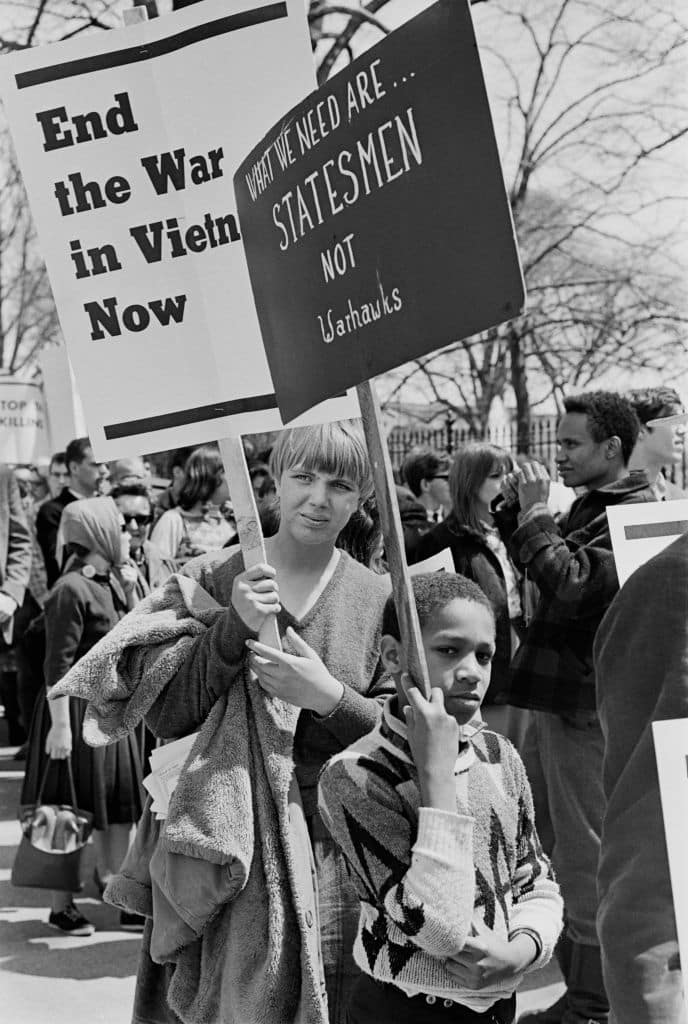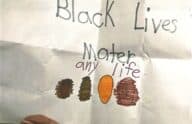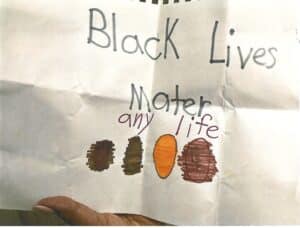This landmark Supreme Court case affirmed that free speech is for all ages

When siblings Mary Beth and John Tinker were just 13 and 15 years old, they found themselves at the center of a major Supreme Court case. The Court’s 1969 ruling would later be remembered as a groundbreaking decision that affirmed the First Amendment rights of students, regardless of age.
Mary Beth, John, and their four younger siblings were raised in a religious home. Their father, Reverend Leonard Tinker, was a Methodist minister, and the family was also closely involved with the Quakers—a Christian group known for their pacifism.
The Tinkers were no strangers to the cause of peace. Reverend Tinker served as the peace education secretary for the American Friends Service Committee, and his wife Lorena was a leader of the Peace Organization in Des Moines where they lived. The parents instilled in their children a sense of moral obligation to use their voices to stand up in the face of injustice.
In November 1965, the death toll in the Vietnam War reached its peak. In protest of the ongoing conflict, 25,000 anti-war activists participated in the “March on Washington.” John and his friend, Christopher Eckhardt, were among them. Like the Tinkers, the Eckhardt family was heavily involved in the anti-war movement. Christopher’s mother, Margaret Eckhardt, even served as the president of the Des Moines chapter of the Women’s International League for Peace and Freedom.
One month after the march, John, Christopher, and Mary Beth planned their own protest in Iowa, which set the stage for the three students becoming plaintiffs in Tinker v. Des Moines Independent Community School District.
An exercise in free speech
On December 11, 1965, Christopher hosted a meeting at the Eckhardt home with other student activists where they planned a peaceful demonstration against the war. The students would arrive at their respective Des Moines schools on December 16 wearing black armbands—a symbol of their stand against the Vietnam War. School district staff caught word of the protest and did everything they could to stop it before it even began. Acting immediately, they implemented a new policy banning armbands on school grounds. But the ban did nothing to dissuade the students, who were resolute in following through with their demonstration.
As planned, Mary Beth, John, Christopher, and some of their schoolmates wore their black armbands to class on December 16 and 17. The school district responded by targeting five student protestors, including John, Mary Beth, and Christopher, all of whom were subsequently suspended. When they were allowed to return to school after Christmas break, they obeyed the district’s rules and left the armbands at home. Instead, the students dressed in all-black clothing, a symbol of their continued protest.
When word of the student protest spread, the public responded with hostility, targeting Christopher and the Tinker family with threats. As Mary Beth remembers, “A man who had a radio talk show threatened my father on the air. Red paint was thrown on our house. A woman called on the phone, asked for me by name, and then said, ‘I’m going to kill you!’”
As for Christopher, he was threatened by several classmates. “I wore the black armband over a camel-colored jacket. The captain of the football team attempted to rip it off. I turned myself in to the principal’s office, where the vice principal asked if I ‘wanted a busted nose.’ He said seniors wouldn’t like the armband.” He also remembers being told by a school counselor that colleges would reject him if they heard about the protest.
Trying though this was, Christopher and the Tinker kids were raised to believe that civil disobedience in pursuit of a righteous cause was not only acceptable but necessary. Mary Beth told PBS, “We knew that our father had a very strong belief that you should follow your conscience. He had always told us that if you don’t follow your conscience, we could have the Nazis, and some of his friends had been killed in World War II. I remember him taking us to the graveyard to their graves and teaching us that lesson that you need to stand up for your conscience. They were also examples for how to do that.”
Backing down was not in their nature. “We had examples in our life of people who really sacrifice and the Birmingham kids, four of them were killed for speaking up against racial segregation. I felt like getting suspended was really not a very bad thing to happen, compared to that,” Mary Beth said in an interview many years later.
The Tinkers and the Eckhardts were keenly aware that the First Amendment protected their freedom of expression in public spaces, like schools. After the suspension, they sued the school district for violating their children’s rights.
What happened in Des Moines reflects the broader tumultuous political climate of the 1960s. The Vietnam War was unique in that it occurred at a time when televisions had become widely available and were found in most American homes. For the first time in history, the horrors of war were broadcast into living rooms across the country. With this increased exposure to the war came more opposition, sparking what could arguably be called the first major anti-war movement in America.
While many Americans had good reason to question U.S. involvement in Vietnam, opposition to the war was still a fringe movement. A large portion of the country remained unsympathetic to the anti-war movement, especially older generations of Americans. Many even called for restrictions on First Amendment rights to suppress the anti-war movement. Tinker was just one of several Supreme Court cases to deal with First Amendment issues during this time. It was, however, the only case addressing the rights of K-12 students.
Tinker v. Des Moines Independent Community School District
The lower courts dismissed the case on the grounds that the school district had acted constitutionally because, in their view, the protests disturbed the other students’ ability to learn while in school. The Tinkers appealed. The Eighth Circuit Court of Appeals judges were divided, and the case made its way to the Supreme Court—three years after the initial suspension.
In a 7-2 ruling, the Supreme Court held that the school district had indeed violated the students’ First Amendment rights. Delivering the majority opinion, Justice Abe Fortas wrote, “It can hardly be argued that either students or teachers shed their constitutional rights to freedom of speech or expression at the schoolhouse gate.”
The Court’s decision made it clear that kids have free speech rights too. However, that didn’t necessarily mean these rights were absolute.
The Court’s decision established the “Tinker test,” or the “substantial disruption” test, to determine whether a school has violated a student’s constitutional right to free speech. The substantial disruption test states that a school may step in if a student’s speech causes substantial disruption or material interference with school activities. There are some nuances to this test.
Ultimately, schools cannot hamper speech just because they do not agree with whatever is being said or expressed. As Justice Fortas wrote:
In our system, state-operated schools may not be enclaves of totalitarianism. School officials do not possess absolute authority over their students. Students… are possessed of fundamental rights which the State must respect, just as they themselves must respect their obligations to the State. In our system, students may not be regarded as closed-circuit recipients of only that which the State chooses to communicate. They may not be confined to the expression of those sentiments that are officially approved. In the absence of a specific showing of constitutionally valid reasons to regulate their speech, students are entitled to freedom of expression of their views.
Tinker’s lasting legacy
Tinker’s legacy is just as important today as it was during the Vietnam War. Public schools continue to suppress the rights of their students on ideological grounds, as is the subject in one of Pacific Legal Foundation’s latest cases.
Today, Mary Beth Tinker continues to be a strong advocate for student free speech. Remarking on Tinker’s legacy earlier this year, she said, “It’s about youth having the right to express all the full range of human emotion. Not just the happy feelings, no, the full range: grief, anxiety, depression, sadness, sorrow, whatever it is. You should have a right to express those feelings.”
First Amendment rights are not magically granted to a person the moment they turn 18. Each of us is born with these rights. Tinker reminds us that it is our constitutional principles—not a school’s ideological beliefs—that determine the right to free speech and expression.





